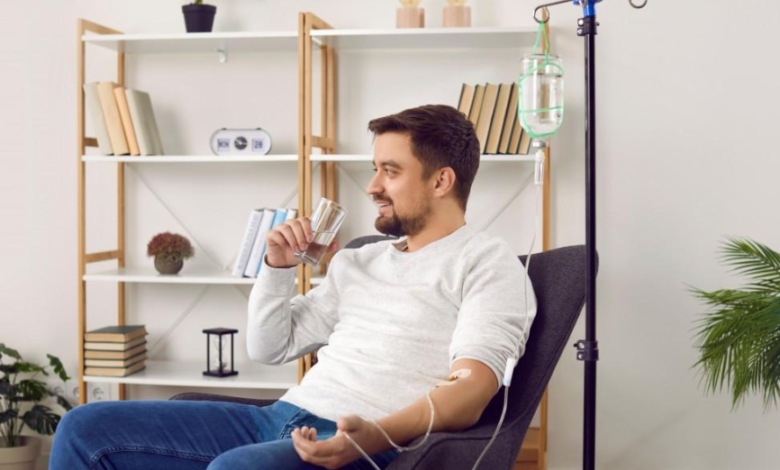Understanding the Basics and Benefits of Intravenous Therapy

Introduction to Intravenous Systems
Intravenous therapy has become a cornerstone of modern medical treatment. It provides a safe and efficient method to deliver fluids, medications, and nutrients directly into a patient’s bloodstream. Proper administration ensures accurate dosing, rapid onset of action, and enhanced patient recovery. Hospitals, clinics, and even home healthcare settings rely on this therapy to manage both routine and critical care scenarios effectively.
Importance of Using High-Quality Equipment
The success of intravenous therapy is highly dependent on the quality of the equipment used. Poorly designed or malfunctioning devices can lead to incorrect dosing, infection, or patient discomfort. High-quality systems support patient safety, improve treatment accuracy, and enhance workflow efficiency. Medical professionals iv set rely on these systems to deliver consistent therapy and minimize potential complications during treatment.
See also: What to Expect From Your Veterinary Visit: Pet Health Tips
Key Components of an iv set
An iv set consists of several interconnected components, each with a specific function that ensures safe and effective fluid administration. Understanding the purpose of each part is essential for medical staff.
Drip Chamber
The drip chamber allows healthcare providers to monitor the flow of fluids visually. It also prevents air bubbles from entering the bloodstream, reducing the risk of air embolism. Accurate management of the drip chamber ensures controlled and precise delivery of fluids over time.
Roller Clamp
The roller clamp is used to adjust the flow rate of the fluid passing through the tubing. By carefully regulating this component, healthcare professionals can control the speed of administration, which is particularly important for treatments requiring precise dosing over extended periods.
Tubing
Tubing connects the fluid source to the patient’s intravenous access point. It is available in various lengths and diameters, depending on clinical requirements. Properly maintained tubing ensures smooth and continuous fluid flow while minimizing the risk of kinks, blockages, or contamination.
Catheter or Needle
The catheter or needle provides access to the patient’s vein. Catheters are often preferred for long-term therapy, as they reduce tissue trauma and enhance patient comfort. Correct insertion, maintenance, and monitoring are critical to prevent infection and ensure uninterrupted therapy.
Luer Lock Connector
The luer lock connector secures the tubing to syringes or other medical devices, creating a leak-proof connection. This ensures precise fluid delivery and maintains sterility during the administration process.
Injection Port
Injection ports allow additional medications or fluids to be introduced without disconnecting the main setup. This feature provides convenience, minimizes contamination risks, and enables multiple medications to be administered efficiently.
Applications of an iv set
Understanding the practical applications of an iv set is essential for ensuring effective patient care. These systems are used in various clinical scenarios, each requiring precise control and monitoring.
Fluid Replacement
Patients experiencing dehydration, blood loss, or electrolyte imbalances require fluid replacement. Proper use of all iv set components ensures that fluids are delivered at the correct rate, maintaining balance and supporting recovery.
Medication Delivery
Intravenous therapy allows medications to be delivered directly into the bloodstream, providing rapid therapeutic effects. This method is especially important in emergency care, critical care units, and situations where oral administration is not viable. Proper setup of an iv set ensures accurate dosing and reduces the risk of complications.
Nutritional Support
Patients unable to consume food orally can receive essential nutrients intravenously. This method allows controlled delivery of vitamins, minerals, and other essential nutrients, promoting overall health and aiding recovery.
Blood Transfusion
Blood transfusions require careful monitoring and precise control. Each component of an iv set helps ensure that the transfusion is administered safely, maintains sterility, and prevents complications such as air embolisms or contamination.
Selecting the Right System
Choosing the appropriate iv set depends on factors such as patient age, therapy type, fluid volume, and clinical setting. Pediatric patients may require smaller catheters and lower-volume tubing, while adults requiring rapid infusion may need larger-bore systems. Other considerations include compatibility with existing medical devices, ease of handling, and sterility standards to ensure patient safety.
Best Practices for Usage
Even with high-quality equipment, proper handling and maintenance are crucial. Healthcare providers must follow established protocols for setup, monitoring, and adjustment of flow rates. Regular inspection of all components helps identify leaks, blockages, or disconnections, ensuring continuous therapy and patient safety.
Enhancing Patient Comfort
Patient comfort plays a key role in the success of intravenous therapy. Flexible tubing, smooth connectors, and ergonomic designs help reduce discomfort during treatment. Injection ports allow additional medications without repeated needle insertions, improving overall patient experience. Minimizing pain and anxiety encourages compliance, particularly in patients requiring long-term therapy.
Safety and Environmental Considerations
Disposable components of an iv set help reduce the risk of cross-contamination. However, they also contribute to medical waste. Many hospitals are now adopting environmentally responsible materials and recycling programs. Proper disposal practices combined with high safety standards ensure that intravenous therapy is both safe for patients and considerate of the environment.
Innovations in Intravenous Systems
Recent advancements in intravenous technology focus on safety, efficiency, and patient experience. Preassembled kits, integrated flow regulators, and smart connectors reduce the chance of errors and simplify setup. Innovations in materials and design enhance sterility, reduce setup time, and improve overall quality of care.
Conclusion
Intravenous therapy is a vital part of modern healthcare, providing fast, accurate, and effective delivery of fluids, medications, and nutrients. Understanding an iv set and its components ensures that healthcare providers can administer therapy safely and efficiently. From fluid replacement and medication delivery to nutritional support and blood transfusions, each element plays a critical role. Proper selection, handling, and familiarity with modern innovations improve treatment outcomes and support high standards of patient care.




